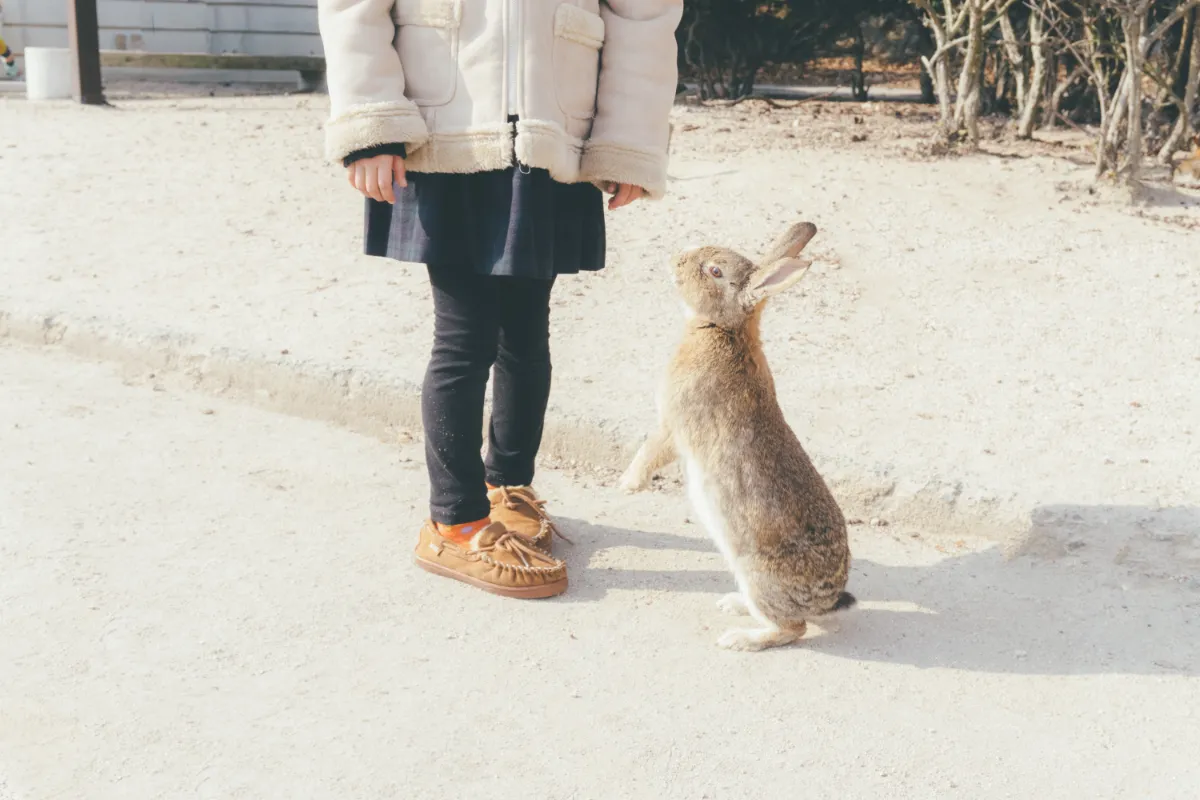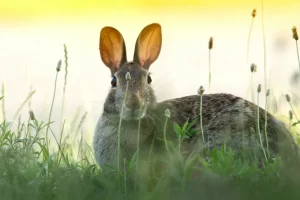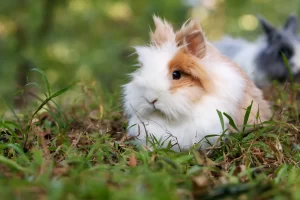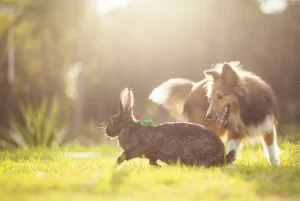In the world of pets, rabbits are like enigmatic dancers on a stage, using their body language to communicate their deepest emotions and desires.
In this enlightening article, readers will uncover the secrets behind these furry friends’ intricate cues. From their charming twitching noses to their adorable grooming habits, every gesture holds meaning.
Whether you’re a seasoned rabbit owner or considering one as a pet, understanding their body language will deepen your connection and ensure their happiness.
Get ready to unveil the captivating world of rabbit communication.
In This Article
- 1 Ears: Understanding the Signals
- 2 Nose: The Secrets Behind Sniffing
- 3 Body Position: What Their Posture Reveals
- 4 Grooming: Insights Into Rabbit Hygiene
- 5 Other Behaviors: Decoding Unique Gestures
- 6 Emotions: Interpreting Rabbit Expressions
- 7 Communication: How Rabbits Convey Their Needs
- 8 Frequently Asked Questions
- 8.1 What Are Some Common Signs of Discomfort or Anxiety That Can Be Observed Through a Rabbit’s Body Language?
- 8.2 How Can You Tell if a Rabbit Is Feeling Threatened or Angry?
- 8.3 What Are Some Playful Behaviors That Rabbits May Exhibit?
- 8.4 Can a Rabbit’s Grooming Behavior Indicate Anything Other Than Relaxation and Comfort?
- 8.5 What Are Some Unique Gestures or Behaviors That Rabbits May Display and What Do They Mean?
- 9 Conclusion
Ears: Understanding the Signals
Rabbits use their ears to communicate various signals, providing important insights into their emotions and intentions. Understanding rabbit ear language is crucial for anyone looking to interact with these adorable creatures.
One common misconception about rabbit ears is that they only serve the purpose of hearing. While it’s true that rabbits have excellent hearing abilities, their ears also play a significant role in expressing their feelings. Flattened ears, for example, indicate fear or an attempt to hide, while upward and alert ears indicate high alertness.
Another misconception is that rabbits constantly twitch their ears. In reality, ear twitching can indicate excitement or discomfort. By paying attention to these subtle cues, one can better understand a rabbit’s emotional state and respond appropriately, ultimately providing them with the care and attention they need.
Nose: The Secrets Behind Sniffing
With their highly sensitive noses and acute sense of smell, rabbits rely on sniffing to gather information about their surroundings and communicate with other animals. Sniffing techniques play a crucial role in a rabbit’s daily life.
When a rabbit sniffs, it isn’t only exploring its environment but also identifying scents and detecting potential danger. Their nose wiggling isn’t just a cute quirk, but it serves a purpose. Rabbits have more scent receptors in their nose compared to humans, allowing them to detect and identify a wide range of scents.
The wiggling of their nose helps them find things as they’re far-sighted, and it also aids in getting a better scent when they’re close to objects.
Body Position: What Their Posture Reveals
When observing rabbits, one can learn a lot about their emotions and intentions through their body position. Understanding the different body positions of rabbits can provide insight into their state of mind and well-being. Here are a few key body positions and their meanings:
- Sitting vs. Lying: Rabbits that are sitting upright are generally alert and cautious, while rabbits that are lying down are more relaxed and at ease.
- Stretched Out vs. Curled Up: When a rabbit stretches out with their body elongated, it signals contentment and comfort. On the other hand, when a rabbit curls up into a compact position, it may indicate fear or a desire to protect themselves.
Grooming: Insights Into Rabbit Hygiene
A rabbit spends approximately 15% of its waking hours grooming itself to maintain proper hygiene. Grooming rituals are an essential part of a rabbit’s daily routine. They use their paws to clean their fur, focusing on areas like their face and ears. Paw cleaning helps them remove dirt, debris, and excess fur.
Rabbits are meticulously clean animals and take pride in their appearance. Grooming behavior also serves as a way for rabbits to relax and unwind. When a rabbit grooms in the presence of humans, it indicates a sense of trust and comfort.
Other Behaviors: Decoding Unique Gestures
Rabbits exhibit a variety of unique gestures that can be decoded to understand their behavior and communication. Understanding these gestures can help rabbit owners provide the best care and support for their furry friends.
When it comes to rabbit playtime, decoding their playful behaviors can be quite entertaining. From zooming around the room to tossing toys in the air, rabbits display their joy and excitement through their playful antics.
Additionally, rabbit bonding is an important aspect of their social interactions. Observing their behaviors during bonding sessions, such as grooming each other or snuggling together, can provide insights into their bond and overall happiness.
Emotions: Interpreting Rabbit Expressions
With their expressive faces and body language, owners can easily interpret a rabbit’s emotions and understand their needs. Facial expressions play a crucial role in decoding rabbit emotions. For example, wide open eyes indicate surprise or fear, while narrowed eyes suggest contentment or relaxation. Additionally, a rabbit’s vocalizations provide valuable insights into their emotional state. Understanding rabbit communication involves recognizing different sounds they make, such as purring when they’re happy or grinding their teeth when they’re in pain.
Communication: How Rabbits Convey Their Needs
Rabbits use a variety of vocalizations and body movements to express their needs and desires. Understanding their communication cues is crucial for serving their needs effectively.
Vocalizations: Deciphering rabbit sounds can help determine their emotional state. Some common sounds include purring when they’re content, growling when they’re angry or scared, and screaming when they’re in pain.
Body language and bonding: Understanding social cues is also important. For example, rabbits may nudge or push their human caregivers to seek attention or affection. They may also lick or groom their caregivers as a sign of trust and bonding. Additionally, rabbits may thump their hind legs to indicate danger or discomfort.
Frequently Asked Questions
What Are Some Common Signs of Discomfort or Anxiety That Can Be Observed Through a Rabbit’s Body Language?
When observing a rabbit’s body language, signs of discomfort or anxiety can be observed. These include flattened ears, thumping with back legs, turning and moving away with flicking back feet, and boxing behavior.
How Can You Tell if a Rabbit Is Feeling Threatened or Angry?
Signs of aggression in rabbits include thumping with their back legs, turning and moving away with flicking back feet, and boxing behavior. To calm an angry rabbit, give them space, avoid sudden movements, and offer treats or toys for distraction.
What Are Some Playful Behaviors That Rabbits May Exhibit?
To encourage playfulness in pet rabbits, it’s important to understand the different types of play behavior they exhibit. Providing toys like tunnels and balls, engaging in interactive play, and creating a safe environment can help stimulate their natural playful instincts.
Can a Rabbit’s Grooming Behavior Indicate Anything Other Than Relaxation and Comfort?
Rabbit grooming behavior can indicate more than relaxation and comfort. It plays a significant role in bonding and social hierarchy. Through grooming, rabbits establish trust, reinforce social connections, and maintain their place in the group.
What Are Some Unique Gestures or Behaviors That Rabbits May Display and What Do They Mean?
Rabbits display unique gestures and behaviors that can indicate their emotions. These include signs of discomfort, anxiety, feeling threatened, and feeling angry. They also engage in playful behaviors and grooming behavior, which indicate relaxation and comfort.
Conclusion
Understanding rabbit body language is essential for building a strong bond and ensuring the well-being of these adorable creatures. By decoding their subtle cues such as ear positions, nose twitches, body posture, grooming habits, and unique behaviors, we can interpret their emotions and intentions.
This knowledge enhances our relationship with rabbits and allows us to communicate and meet their needs effectively. So, whether you’re a seasoned rabbit owner or considering getting one as a pet, take the time to learn and understand their body language for a fulfilling and rewarding experience.





